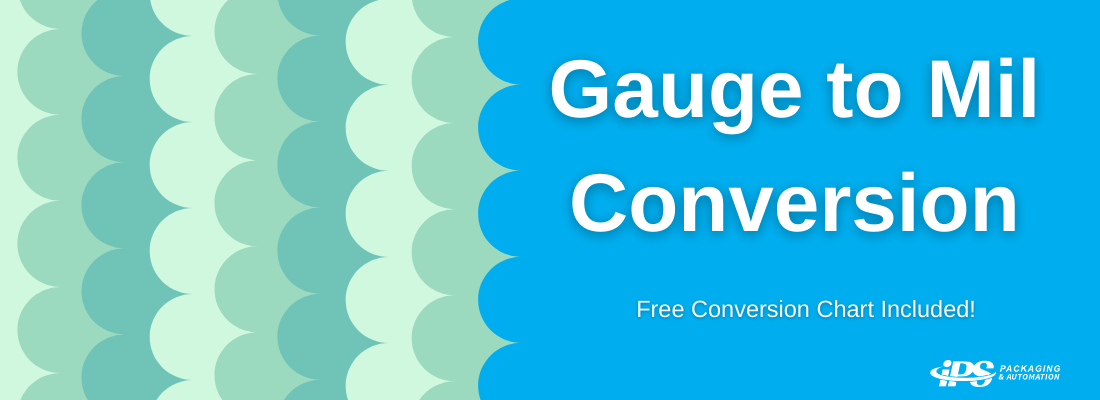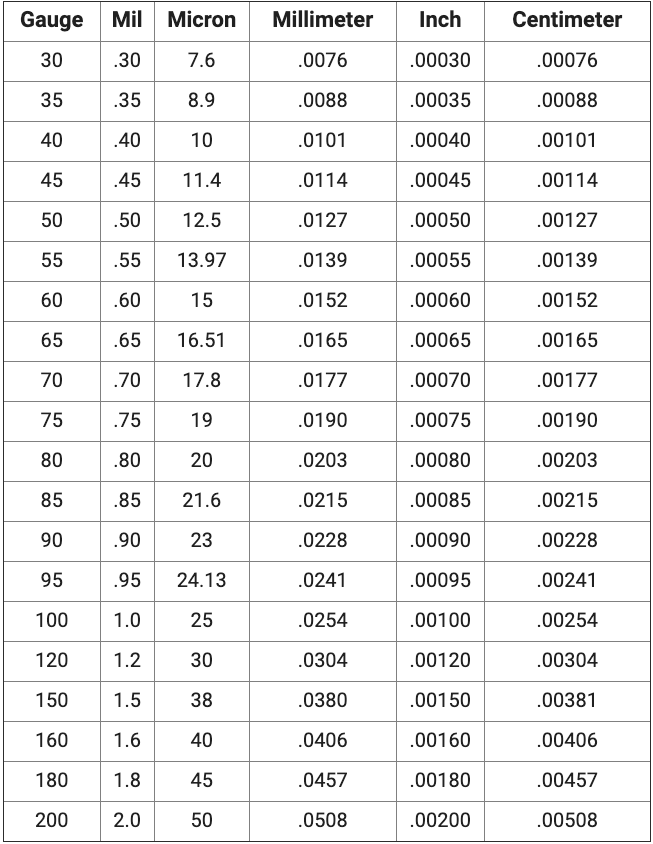

Gauge to Mil Conversion
When utilizing stretch film, poly bags, or other plastic packaging supplies to protect your valuable products, it’s necessary that you use the correct sizes and styles of each material. When you work with an optimally sized stretch film or plastic sheet, you ensure that your pallets will be able to withstand harsh travel or storage conditions. Below, you’ll find a handy breakdown of the meanings and conversions of each thickness measurement. We’ve even included a helpful gauge to mil conversion chart for easy reference.
What is a Gauge?
In layman’s terms, a gauge is a unit of measurement. It’s likely that you’ve heard of it in reference to wiring, but when used to discuss plastic thicknesses it signifies a different amount. This leaves many people wondering how to measure gauge. For most purposes, it’s easiest just to understand that the higher the gauge number, the thicker the film will be. For example, your standard trash can liner might be somewhere between 120 and 160 gauge, while a heavy-duty bag for yard waste might range from 300 to 400 gauge.
What is a Mil?
Mil is a common unit of measurement in manufacturing and is equal to 1/1,000th of an inch. Just like gauge, the higher the number of a mil measurement, the thicker your material will be. Your average kitchen ziplock bag is probably around 1.5-2 mil thick, while a heavy-duty garbage bag is about 2-3 mil thick. When you want to convert mil to gauge, all you need to do is multiply the mil number by 100. For example:
2 mil x 100 = 200 gauge
In order to convert mil to inches, simply divide the mil number by 1,000:
3 mil / 1,000 = .003 inches
The Gauge to Mil Conversion Breakdown
When working with any sort of plastic or poly packaging materials, such as stretch film, poly bags, or plastic sheeting, it’s important to know that you might see units measured in either gauge or mil. After you get used to seeing and handling poly supplies, you’ll gain a better understanding of what each measurement means in practice. Until that time comes, we know that a quick conversion guide that includes mil, gauge, and more common units of measure will come in handy. Take a look at the chart below for easy reference:
Gauge to Mil Conversion Chart
Remember: 100 gauge = 1 mil and 1 mil = 25.4 micron
100 gauge = .00100 inches = .00254 centimeters

Gauge to Mil to Micron to Anything Else
We understand that finding the right packaging supplies is essential to the wellbeing and continued success of your business. Part of implementing the right packaging strategy is ensuring that what you use is not just constructed from the appropriate materials, but is also sized to correctly fit and protect your goods. Thankfully, the team here at IPS Packaging & Automation can help with that. Contact us today to speak with one of our expert account managers – they’ll assist with finding the right packaging supplies for your unique operation in order to keep your products safe and your business booming.







